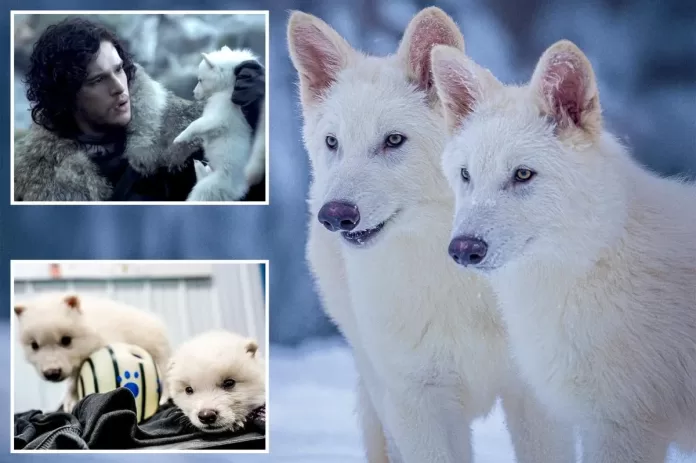Imagine standing in the forest and hearing a deep, bone-chilling howl—a sound that hasn’t echoed across the Earth for over 10,000 years. That eerie yet awe-inspiring moment has now been brought to life, thanks to Colossal Biosciences, a biotech company at the forefront of de-extinction. On October 1, 2024, Colossal successfully birthed two wolf pups genetically engineered to resemble the legendary Dire Wolves, once one of the most dominant predators in North America.
These pups, named Romulus and Remus, were introduced to the world in a viral post on April 7, 2025, capturing the imagination of millions. The achievement signals a landmark moment not just for genetic engineering, but also for conservation, science fiction dreams, and the growing field of synthetic biology.
A Genetic Echo of the Ice Age
Dire wolves, known scientifically as Aenocyon dirus, went extinct around 12,500 years ago. Unlike their name suggests, they were not true wolves but a separate species that diverged from modern canids over 5 million years ago. Recent studies confirmed that dire wolves didn’t interbreed with gray wolves or coyotes, making their lineage uniquely isolated—until now.
Colossal Biosciences reconstructed the dire wolf genome using ancient DNA from fossils that dated as far back as 72,000 years. Their researchers identified 20 significant genetic variations across 14 gene pairs that made dire wolves distinct. These differences were then introduced into gray wolf DNA using CRISPR gene-editing technology.
The result? Romulus and Remus—pups with thick white coats, powerful jaws, and large builds, genetically tweaked to reflect the dire wolf’s iconic traits.
Behind the Science: How Were They Created?
To bring these pups to life, Colossal extracted ancient DNA from dire wolf fossils—specifically a 13,000-year-old tooth from Ohio and a 72,000-year-old skull from Idaho. Using this data, scientists identified the unique genetic markers responsible for dire wolf characteristics, including fur color (via the CORIN gene) and body mass.
These edits were made to gray wolf blood cells using CRISPR. The modified nuclei were then inserted into gray wolf egg cells, which were implanted into domestic dogs—close relatives of wolves. After a gestation period of 65 days, the pups were delivered via C-section, with a third pup, Khaleesi, arriving later.
Not Just a Scientific Marvel—A Conservation Tool
Colossal positions this as more than just a flashy science project. According to their statement on X (formerly Twitter), this breakthrough is “a leap forward for science, conservation, and humanity.” The company envisions using these dire wolf-like creatures to restore ecological balance by reintroducing apex predators into selected ecosystems.
Much like the gray wolf reintroduction in Yellowstone National Park—which helped curb overgrazing and revitalize plant and animal life—Colossal believes engineered predators can play a vital role in future rewilding projects.
They’re also using similar methods to aid endangered species. The company recently cloned four red wolves, aiming to increase the genetic diversity of a critically endangered species native to the southeastern United States.
Ethical Dilemmas and Public Reaction
As exciting as this announcement is, it also raises big ethical questions. Critics argue that these animals are not “true” dire wolves, but rather modified gray wolves with cosmetic and structural similarities. As one user on X bluntly put it: “This is not a dire wolf—it’s cosplay.”
Scientists outside of Colossal, like evolutionary biologist Vincent Lynch, agree. They emphasize that while we can engineer traits, we cannot replicate the behaviors or ecological context of an extinct species.
There’s also concern over the ethics of “playing God.” If we revive extinct animals, do we risk creating new problems? Could they harm existing species or ecosystems? Others worry that de-extinction might make people less motivated to protect endangered species, thinking we can always “bring them back later.”
Despite the controversy, the public fascination is undeniable. Comments ranged from “When’s Jurassic Park opening?” to requests for pet-size woolly mammoths. Even Elon Musk chimed in with a tongue-in-cheek request for a miniature mammoth.
The Future of De-Extinction
Colossal’s ultimate goal is to reintroduce these animals into secure preserves, potentially on Indigenous lands where they once roamed.
Beyond dire wolves, Colossal is also working on resurrecting other extinct species like the woolly mammoth and the dodo. If successful, these efforts could transform conservation science as we know it.
A Howl Toward Tomorrow
Whether Romulus and Remus are genuine dire wolves or advanced lookalikes, one thing is clear: this marks a turning point in science and our relationship with nature.
What’s Your Take?
Do you support the revival of extinct species? Drop a comment below and join the conversation. For more cutting-edge stories in science and tech, subscribe to our newsletter today!














